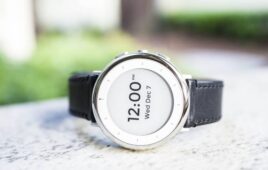Johnson & Johnson announced that Janssen Pharmaceuticals, Inc. has started a research study in collaboration with Apple Inc. to investigate whether or not a heart health program can improve health outcomes and accelerate diagnosis for individuals living with atrial fibrillation (AFib).
Using an app from Johnson & Johnson in combination with Apple Watch’s irregular rhythm notifications, researchers want to see if an ECG app can speed up diagnosis and provide information to the 33 million people worldwide living with AFib. AFib is a condition that often leads to stroke and other devastating consequences.
The study hopes to analyze the impact of Apple Watch on the early detection of AFib and improve the outcomes of this heart condition.
“Through Apple Watch people have been able to learn more about their heart health, including discovering they have AFib. This kind of information empowers customers to follow up with the right treatment or even better, implement healthy habits aimed at prevention,” said Jeff Williams, Chief Operating Officer, Apple Inc.
A multi-year research program will be launched later in 2019 and will occur in the US only. The program will conduct a randomized controlled research study for individuals age 65 years and older.
The study’s goals include measuring the outcomes of a heart health engagement program with irregular rhythm notifications on Apple Watch, and assessing the impact of a medication adherence program using the app from Johnson & Johnson.
“We’re excited about the potential of common, wearable technology to aid in the earlier detection and prevention of a frequent cause of stroke,” said Paul Stoffels, M.D., Vice Chair of the Executive Committee and Chief Scientific Officer, Johnson & Johnson. “Too many people living with AFib are unaware of their risk, and earlier detection, diagnosis and treatment of AFib could significantly improve outcomes. Based on the insights generated through this research program, we may be able to develop new ways to detect other health conditions earlier in the future that also exhibit measurable physiological symptoms.”




